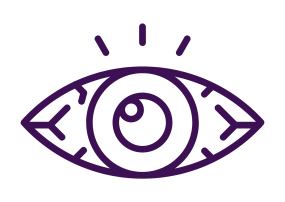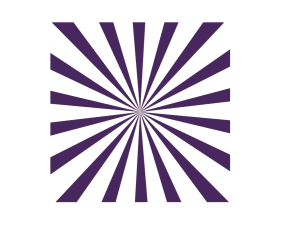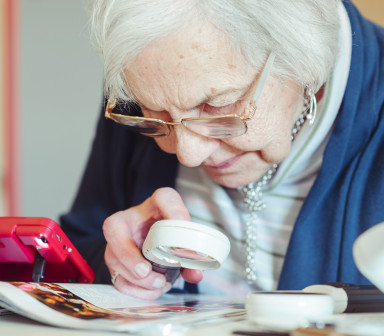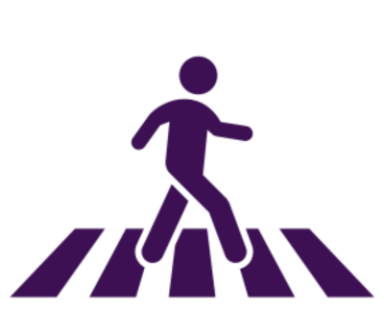In our latest blog, Sight Scotland Veterans Lead Rehabilitation Officer, Sandra Taylor, shares five key things to know about lighting for those with visual impairment (VI).

Low light levels can cause eye strain
As we age, our eyes undergo various changes and as a result we require more light to function, especially in dimly lit environments. This is often due to the gradual loss of photoreceptors in the retina and changes in the lens of the eye.
When light levels are low, our pupils dilate to allow more light in and this can cause eye strain and as a result, reading or performing tasks becomes uncomfortable and often frustrating, finding ourselves squinting or leaning closer to objects, seeking out a light source.

People with Sight Loss require five times more light
The need for more light increases dramatically for visually impaired people, who require up to five times more light to function.
Poor vision in low illumination and difficulty adapting to varying lighting conditions affects visually impaired people’s abilities in everyday life and can affect mobility and increases falls risks.
Understanding why certain eye conditions require more light can help us to support individuals in making the best use of lighting solutions.

Task lighting can make all the difference
While there is no single lighting solution for visually impaired people, good lighting can make the most of residual vision by increasing contrast and clarity. Utilising appropriate task lighting while carrying out close work such as reading or preparing food, can greatly enhance functional vision.
Look at overhead lighting solutions as well as task lighting to achieve maximum light levels and ensure even lighting throughout the environment including stairwells where there is often poor lighting.

Size matters - when it comes to lumens!
Light bulbs are measured in Lumens with the higher the Lumen, the brighter the bulb. Low wattage and high Lumen will give the most efficient output so remember the higher the Lumen, the brighter the bulb.
We advise LED light bulbs, around 1521 lumen, this is the equivalent brightness to the old 100w bulbs. New LED bulbs are far more energy efficient saving around 92% (A+ energy efficiency) and should last up to 20,000 hours.
Wall colours can have an impact on vision
Simple and inexpensive steps in the home environment can make the most of lighting such as decluttering windows and ensuring they are kept clean to allow maximum natural light into the room.
Have light-coloured walls to reflect the light into the room, dark colours result in a dark room. Control the light to reduce glare, with blinds and dimmer switches. Ensure even lighting, avoiding pockets of light.



